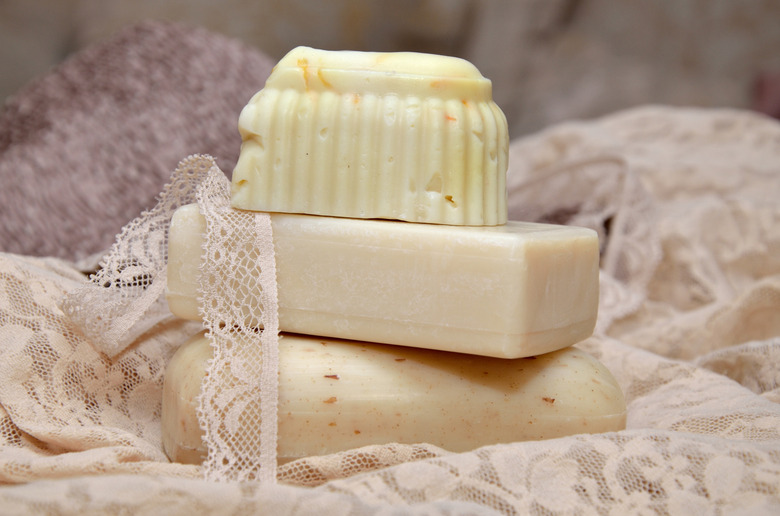Which Lipids Are Water Soluble?
Lipids are a class of molecules that have very poor water solubility, by definition. As such, the simplest answer to the question as to which lipids are water soluble is none of them. However, there are some lipids that, in modified form, have limited water solubility. This is an important property of certain lipids and contributes to their functionality.
Lipids
Lipids
Many biochemicals fall into categories based upon their molecular structures. For instance, proteins are compounds that are made up of small building blocks called amino acids, while carbohydrates are made up of small building blocks called monosaccharides. Lipids don't have common building blocks; they're quite varied in their chemical makeup. Instead, they're defined based upon solubility, explain Drs. Reginald Garrett and Charles Grisham in their book "Biochemistry," where lipids are biomolecules that have very limited water solubility.
Fatty Acids
Fatty Acids
While lipids technically have poor solubility in water, there are certain categories of lipids that dissolve partially in water. Fatty acids are one example. In nature and in the body, fatty acids are rare as free compounds — generally, they're found as portions of larger molecules such as triglycerides or phospholipids. Free fatty acids, however, consist of a long "tail" made up of carbon and hydrogen. The tail is not water soluble, but dissolves well in fat and oil. They also have a "head" that contains two oxygen atoms, which has significantly greater water solubility.
Soap
Soap
Since fatty acids have a tail that dissolves well in oil and a head that dissolves in water, they make good soaps. It's possible to produce free fatty acids from triglycerides, which are animal fats, by reacting triglycerides with lye or base. This results in a foamy mixture of fatty acids. The fatty acids stick their tails in grease or oil, surrounding the grease, while the water soluble heads remain outside the grease or oil. This creates a grease emulsification, meaning drops of oil end up surrounded by fatty acids, and suspended in water. In this way, soap helps to wash grease off surfaces.
Bile Salts
Bile Salts
Bile salts are another example of a lipid that has partial water solubility. Like fatty acids, bile salts consist of a large portion of the molecule that isn't water soluble, and dissolves in fat. A small portion of the bile salt, however, is water soluble. Your digestive tract uses bile salts to break dietary fat into small chunks and emulsify it, meaning suspend it in the water-based digestive juices of the intestine, explains Dr. Lauralee Sherwood in her book "Human Physiology."
References
- "Biochemistry"; Reginald Garrett, Ph.D. and Charles Grisham, Ph.D.; 2007
- "Human Physiology"; Lauralee Sherwood, Ph.D.; 2004
Cite This Article
MLA
Hendrickson, Kirstin. "Which Lipids Are Water Soluble?" sciencing.com, https://www.sciencing.com/which-lipids-are-water-soluble-6128796/. 21 July 2017.
APA
Hendrickson, Kirstin. (2017, July 21). Which Lipids Are Water Soluble?. sciencing.com. Retrieved from https://www.sciencing.com/which-lipids-are-water-soluble-6128796/
Chicago
Hendrickson, Kirstin. Which Lipids Are Water Soluble? last modified March 24, 2022. https://www.sciencing.com/which-lipids-are-water-soluble-6128796/
